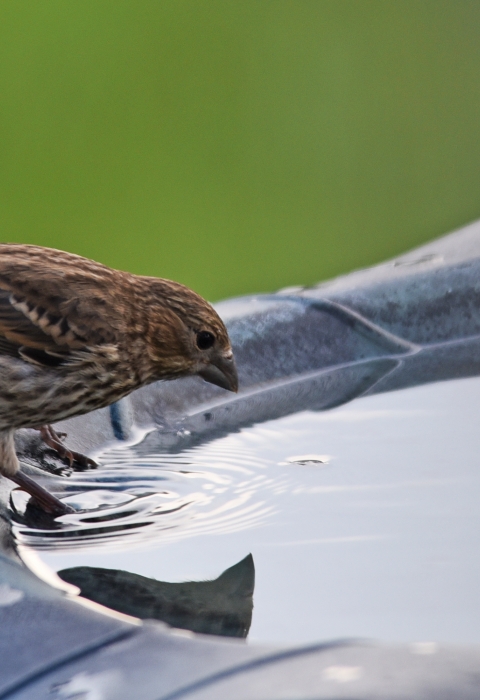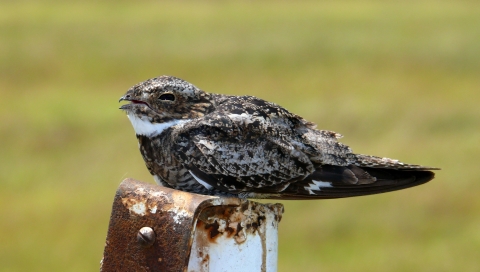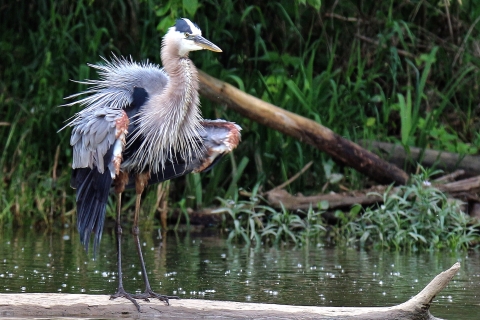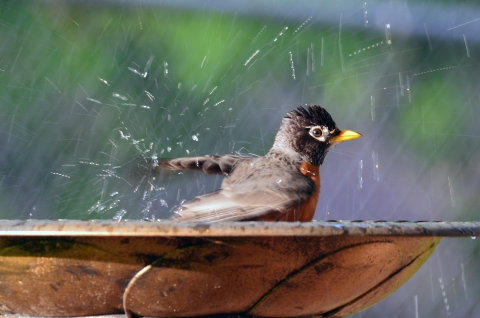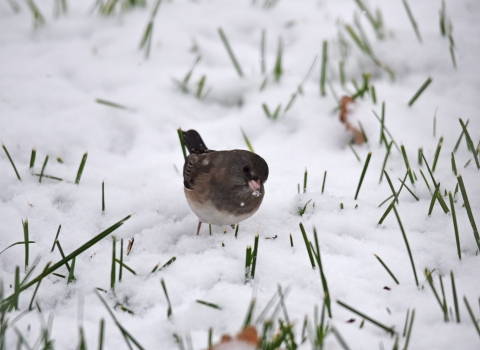Do you ever wonder how birds stay cool on hot summer days? We at the U.S. Fish and Wildlife Service want to share some insights! Like people, birds can withstand changes in the weather and maintain their body temperature whether it’s hot or cold outside, but there are limits. When summer temperatures are on the rise, birds depend on adaptations to keep from overheating.
Many adaptations are different variations of thermoregulation, the mechanism that warm-blooded animals use to balance their body temperature with their surroundings. Thermoregulation is a process where warmer blood cools and then circulates throughout the body, lowering the animal’s overall body temperature. It can take many forms and is a window into understanding how our physical world works. To understand how birds have adapted these cooling techniques, we need a quick overview of how thermal energy - or heat - moves from one thing to another. Simply put, heat moves in one direction, from hot toward cold. The movement of heat happens on a molecular level in all matter, whether it’s solid, liquid or gas. It’s within this principle that birds are able to transfer their body temperature to cooler air and water around them.
Dogs aren’t the only ones panting
While birds can’t truly pant like dogs, they do have their own kind of panting and some birds take it a step further and do something called fluttering. Gular fluttering, as it’s more formally known, is a behavior common to nocturnal insectivores including common nighthawks and whip-poor-wills. Fluttering is a combination of rapid, open-mouth breathing and quick vibration of the moist throat membranes that causes evaporation. As excess heat leaves the bird’s body with each exhalation, the bird cools. You might also see this behavior from double-crested cormorants, owls and mourning doves as they rest during the hottest times of the day.
Taking a dip in the water
Who doesn’t like taking a dip in a lake or river on a hot day? Birds keep cool by taking a bath or going swimming just like we do. Submerging exposed skin helps birds to dissipate their body heat to the cooler water around them. Some birds fluff up their feathers after a bath and open up their wings to catch a breeze, helping them cool off even more.
How you can help
Want to help birds keep cool through the summer? Provide a shallow bird bath with one to two inches of water. Birds will use baths as a cooling oasis to splash and drink. Keep an eye on water levels and clean out your bird bath daily. As we all know, one of the best strategies for keeping cool is to avoid the heat all together. Many birds avoid the sun by limiting daytime activity. These birds will forage in the early morning, evening or throughout the night so they can conserve energy and rest during the warmest times of day. Shade from shrubs and trees offer a place to escape from the sun’s rays, so if you’re planning to prune, trim or remove limbs or brush piles, wait until temperatures cool off!
